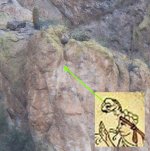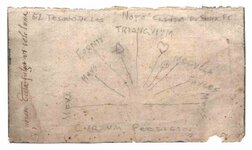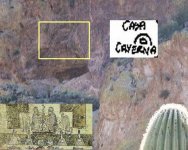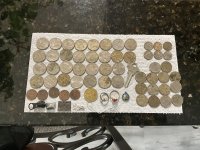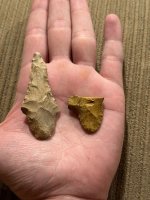somehiker
Silver Member
- May 1, 2007
- 4,365
- 6,426
- Primary Interest:
- All Treasure Hunting
As is the "1" above and to the right of the "MEX" just as on the PS. The "1" on the PS containing a small hole at the bisect of the lines of the number itself.
The "M" of the "MEX" on the PS displaying the same splayed legs of the "M" referencing the scratched heart below the "coazon."
Both it and the 8-N-P are lightly scratched in, and are obvious shortcuts as opposed to the more permanent, deeply carved instructions that exist more as a riddle/parable than anything else.
The question is why? It would seem obvious that this is a second author. Did he chose to disregard the elaborate instructions in favor of leaving a cheatsheet out of exasperation? Or was he worried that the instructions were too elaborate?
Not a "cheat sheet", but definitely additional information. And not really necessary to locate the primary objective IMO.
I now suspect that "MEX" is part of the "why" of the larger story, and that it, for the last person at that location and in possession of the stone (or stones), was his way of leaving a mark of ownership (MEUS) upon both site and map.
https://www.wordhippo.com/what-is/t...d96a57b5e82f9092455e62714957277b0a33ac16.html
Where the "MEX" in my photo appears, is across the upper forehead of this figure...as viewed from another angle...which is likely an image of one of his ancestors.



